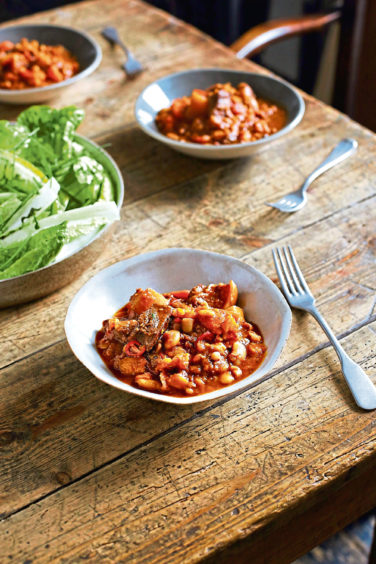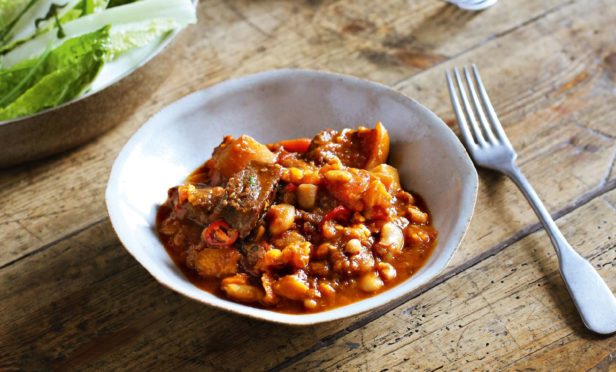Wholesome and warming, this beef chilli is just perfect for these cold winter evenings.
Celebrity chef Hugh Fearnley-Whittingstall has always been known for using seasonal produce in his recipes and showing us how to create delicious dishes with ingredients we’re already likely to have in our fridges and pantries.
This recipe for beef chilli is also just what’s needed for these cold winter nights and is an ideal dish to add to your repertoire when you feel it’s time for something wholesome and warming.
For more inspiration, take a look at the previous recipes in the series here.
Recipe from Eat Better Forever by Hugh Fearnley-Whittingstall, photography by Simon Wheeler, is published by Bloomsbury, priced £26.
Chunky beef chilli
(Serves 6-8)

Ingredients
- Olive or vegetable oil, for frying
- About 200g free-range pork belly (rind on or off), cubed
- 800g chuck or stewing steak, cubed
- 150ml red wine (optional)
- 2 medium onions, halved and thinly sliced
- 4 medium carrots, halved and thickly sliced
- 4 garlic cloves, sliced
- 1 tsp dried chilli flakes
- 2 tsp each cumin and coriander seeds, crushed (or 1 tsp each ground)
- 1 tsp smoked paprika
- 1 star anise (optional)
- ½-1 fresh red chilli, sliced (optional)
- A few strips of pared orange zest
- 3-4 sprigs of thyme (optional)
- 400g tin tomatoes
- About 1 litre hot beef stock, veg or chicken stock
- 1 large sweet potato (300-400g), peeled and cubed (or you can use squash)
- 2 x 400g tins beans (cannellini, kidney or butter beans), drained and rinsed
- Sea salt and black pepper
Method
- Set a large heavy frying pan over a high heat and add a dash of oil. When hot, add the pork with salt and pepper. Cook briskly for several minutes, turning the meat from time to time, until browned all over.
- Transfer to a large flameproof casserole dish. Repeat the browning process with the beef, doing it in two batches so as not to crowd the pan, seasoning it as you go and adding a dash more oil to the pan if necessary.
- When all the meat is browned and transferred to the casserole, reduce the heat under the pan to low and pour in the red wine (or 150ml of the hot stock). It will bubble and hiss. Stir the liquid, scraping the pan with a spatula, to release all the caramelised meaty bits from the base of the pan. Bring to a simmer and set aside.
- Meanwhile, add the onions, carrots, garlic, spices, chilli if using, orange zest, a pinch of salt and a twist of pepper, plus the thyme if using, to the casserole with the browned meat. Cook over a medium heat, stirring often, for eight to 10 minutes to soften the veg.
- Tip the liquid from the frying pan over the meat. Add the tomatoes and hot stock; if the liquid isn’t enough to cover everything, add a little more stock or boiling water.
- Bring to a low simmer and cook very gently for one-and-a-half hours or until the meat is becoming tender.
- Add the sweet potato and beans (with a little more hot stock or water if needed) and cook for a further 30 to 45 minutes. Check that all the meat and veg are nice and tender, tweak the seasoning and the chilli is ready to serve.
